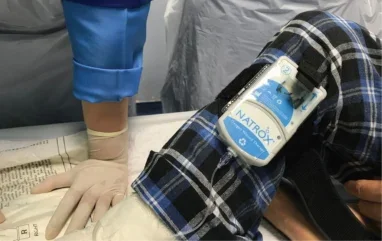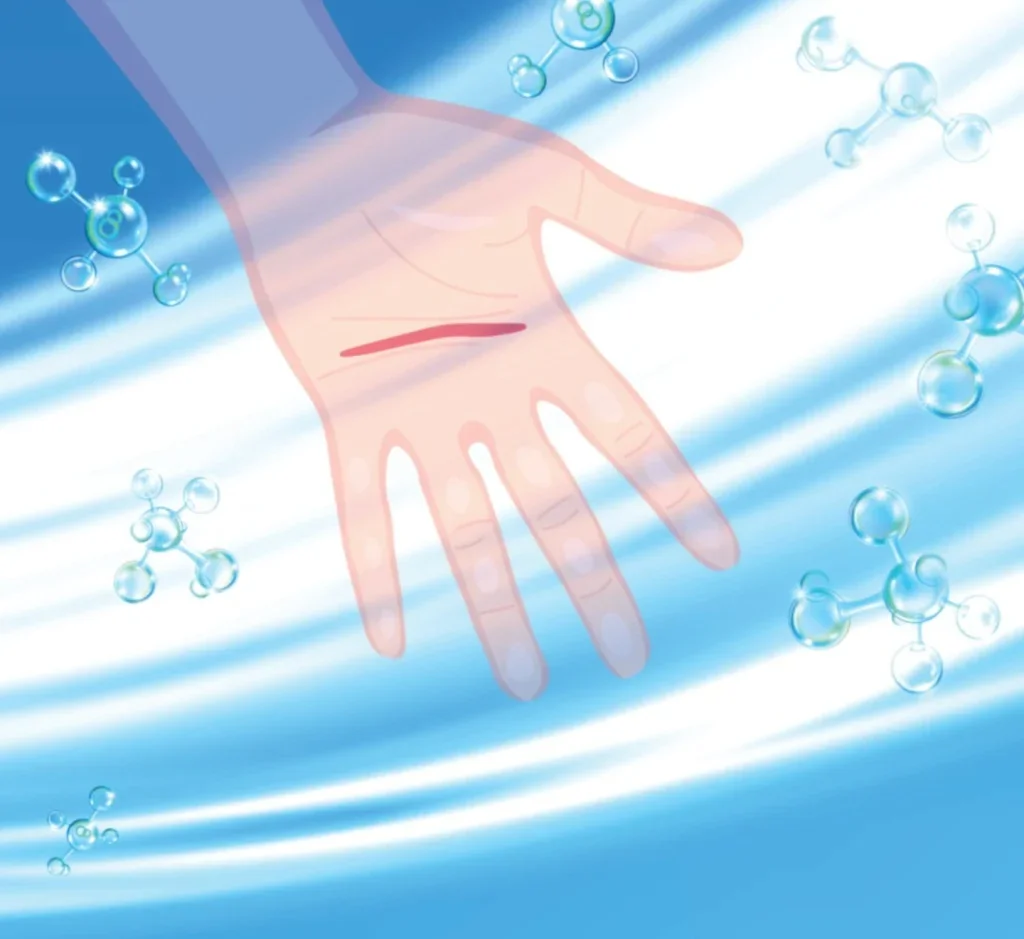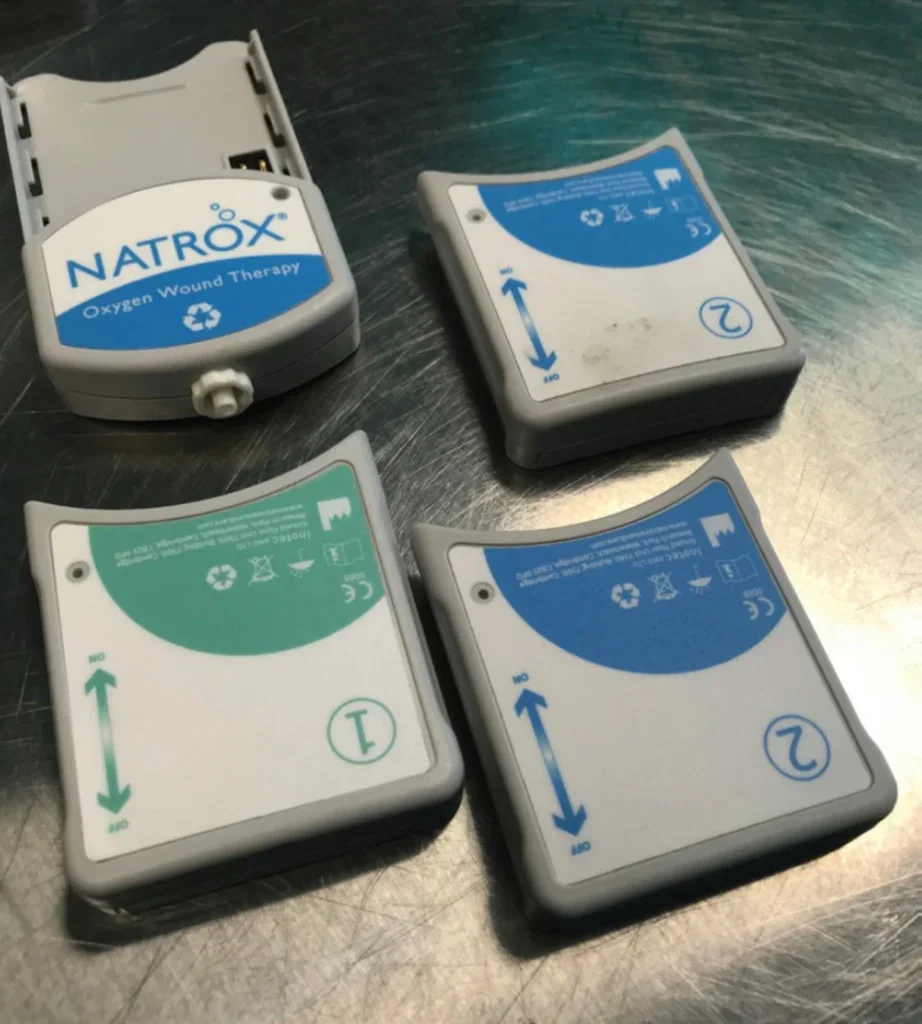
In 2019, the Nobel Prize for Medicine went in a striking new direction. Where previous winners had dealt with some of the epic issues in contemporary healthcare – cancer therapy, say, or in-vitro fertilisation – the committee instead praised a team of scientists researching ‘how cells sense and adapt to oxygen availability.’ Nor were the Swedish worthies the only ones to see value in studying hypoxia, the medical term for when body tissue can’t get enough oxygen. Just a year on from the Nobel coup, after all, hypoxia became inextricably linked with Covid-19, with many patients battling to get enough air to their lungs. Hypoxia, in short, is enjoying a moment. And why not? As the pandemic vividly implied, oxygen is hugely important to keeping organs healthy, and its absence can be catastrophic. That’s arguably clearest not between our ribs but on our skin, with insufficient oxygen causing wounds to fester and puss. The statistics here are clear enough: the healing rate of hypoxic injuries is a mere 49%, compared to 63% of their oxygen-rich cousins. That, in turn, can lead to a gaggle of unpleasant side-effects, from isolation and psychological trauma all the way to amputation.
Yet if 6.5 million Americans battle with chronic wounds in 2023, costing the health system some $25bn each year, the scourge of hypoxia has proved remarkably persistent. For while doctors increasingly understand the link between oxygen and wound management, they’ve typically struggled to implement their findings in the real world. Reliant on unwieldy and imposing hyperbaric oxygen machines, too large to operate at home, they’ve long obliged patients hoping to beat hypoxia to sacrifice their quality of life. Not that the situation is hopeless. Leveraging a new generation of sleek DIY devices, doctors are offering patients a chance to mend their wounds and remain independent – even as the technology could soon cut pain right across medicine.
Out on a limb
Few people are better placed to explore the challenges and opportunities of chronic wound hypoxia than Dr Thomas Serena. A four-decade veteran in the wound care space, he’s published published some 200 papers on wound care, a haul dovetailed by 1,000 public lectures. That’s echoed by Serena’s professional journey: a founder and medical director of the Penn North Centers for Advanced Wound Care, he’s equally dedicated time to the commercial side of medicine. Since 2022, Serena has been the chief medical officer at Natrox, a UK company focused on fighting chronic wounds.

This, in short, is someone worth listening to, and as Serena says, hypoxia is a huge problem across the chronic wound space. “One of the main components of non-healing,” he explains, “is the fact that wounds do not have enough nutrient oxygen,” adding that 60% of wounds on the lower extremities will ultimately require some type of oxygen-boosting intervention. The science underpinning the problem, for its part, is reasonably straightforward. Because of metabolic changes across the various wound healing phases – and for the creation of new blood vessels and skin cells – wounds need more oxygen than healthy parts of the body. The fact that oxygen has an antibacterial effect surely matters too.
It goes without saying, meanwhile, that allowing wounds to fester can lead to serious problems. That’s most obvious in a physical sense. For Dr Animesh Agarwal, a professor at University of Texas Health Science Center San Antonio, non-healing wounds leave patients vulnerable to infection or even amputation. A fair point: one 2020 study finding that chronic injuries like diabetic ulcers are responsible for a full 85% of lost limbs. Nor are the psychological impact of chronic wounds any less serious. As work by Wounds UK makes clear, poor sleep and anxiety are just two common struggles here. Unhappiness is a third: in one survey of 190 patients with chronic venous ulceration, 27% had depression. It hardly helps that long-lasting wounds, especially on the legs, tend to inhibit movement and independence too.
6.5 million
The number of Americans suffering from chronic wounds in 2023.
Inter Mountain Healthcare
With these difficulties in mind, at any rate, it’s unsurprising that doctors have long battled to get oxygen where it’s needed. One option is simply giving patients additional oxygen. But as Serena warns, doing this under normal pressure will soon saturate the blood with haemoglobin, leading to dizziness and fatigue. A better alternative involves so-called hyperbaric oxygen: giving people pure oxygen in a pressurised environment. But while Serena calls this approach “very effective” from a medical standpoint, both he and Animesh highlight a range of practical hurdles. With a look somewhere between a sunbed and an MRI machine, these devices are huge, requiring trained technicians to run – and forcing already-immobile patients to travel for care. Even once they arrive, Animesh warns that some patients “can’t handle” the machines, whether because of the pressure inflicted on their ears or simply due to claustrophobia. Costing over £35,000 a pop, they’re also expensive, hardly ideal when health services across the world are squeezed for funds.
A breath of fresh air
At first glance, the Natrox O2 looks fairly unremarkable. About as big as a mobile phone, and weighing just 107g, it hardly seems to herald a medical revolution. In truth, though, its very smallness is what makes the device so impressive. Forgoing the bulk and expense of old-school hyperbaric machines, this bijou invention can instead be placed directly on a wound, targeting topical oxygen therapy (TOT) right to where it’s needed.
Quite apart from the straightforward medical benefits here – wounds reliant on Natrox therapy are 71% more likely to heal than those using standard care alone – Serena is keen to stress the quality-of-life advantages of such a small package. “I tell this to companies that come to me with inventions all the time,” he says. “‘If it’s not practical, my patients won’t use it, and it’s not worth a lot. They have to be able to wear it at home and be comfortable.’” Happily, the Natrox O2 offers just such flexibility, being small enough to be worn 24/7 on a patient’s belt, its pair of rechargeable batteries meaning patients can operate it themselves without needing to get resupplied at some distant clinic. And if that feeds into improving mental well-being – given the average chronic wound sufferer has between eight and ten comorbidities, battling the ulcers on their legs or arms can do much to boost their mood – the Natrox system’s discreteness boosts mobility in other ways. “Patients don’t like people seeing their devices,” Serena says. “They don’t want their nosy neighbour to know that they’ve got a wound or diabetic ulcer. They want privacy – and that’s important.”
Holistic care
Nor, to be clear, is the Natrox machine alone. Based in California, AOTI is a healthcare company offering a compact ‘multi-patch’ system for chronic wounds. The EpiFLO device, made by Ohio manufacturer Ogenix, achieves something similar. Animesh, for his part, highlights a company called EO2, which integrates oxygen directly into a bandage, explaining how it then “leaches” out into the wound. Yet if the global market for hypoxia-busting devices is already worth $396m in 2023, a figure expected to enjoy CAGR of 7% over the subsequent decade, it’d be wrong to see Natrox and its fellows as silver bullets. As Serena points out, clinical professionals will always need to do what he calls “basic wound care” – for instance removing dead tissue or balancing the wound’s moisture level. No less important, technical advances in topical oxygen therapy (TOT) must dovetail with an appreciation that DIY treatment can’t be imposed arbitrarily. Though it’s simple enough to use, Natrox therefore still comes with some training. For acute cases, meanwhile, home nurses may still be needed, while Animesh says he continues to see patients in his office to ensure treatment is “going in the right direction.”

All that being said, the direction of travel seems clear. Quite apart from those striking growth figures, that’s perhaps most apparent in terms of the digital platforms nowadays accompanying platforms like Natrox. Centralised and cloud-based, these systems permit wound care clinicians to monitor exactly how their topical devices are being used, even as patients heal in the comfort of their homes. Just as important, there’s rising evidence that the same oxygen therapies used to fight chronic wounds have a positive impact elsewhere too, notably in alleviating pain. “When we tried the Natrox on very painful leg ulcers,” Serena says, “the pain seemed to go away rather rapidly” – far more rapidly than simply because the wound was healing.
$396m
The size of the global oxygen therapy devices market in 2023, a sector expected to enjoy CAGR of 7% through 2033.
GlobalData
Exactly why this happens remains unclear. It may have something to do with the chemical impact of oxygen on the body; Animesh highlights the link between oxygen and tissue perfusion. Regardless, and especially with the impact pain reduction could have on weaning patients off dangerous painkillers like oxycontin, it seems clear that TOT is here to stay. Nobel Prize committee: you may just have your next winner.





